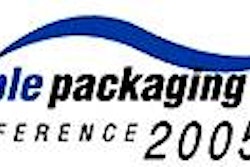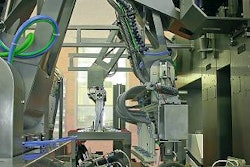With 23 years of experience with Baxter Healthcare, and more than five with Sterile Medical Packaging Consulting, Stockdale offered the following tips during his presentation:
Sterilization process alternatives include irradiation (including Cobalt 60 and electron-beam), ethylene oxide (EtO), steam autoclave, and vaporized hydrogen peroxide. The decision on which process to use is usually driven by the type of medical device. You need to consider the material and drug compatibility with the sterilization process, as well as cost issues. Be aware that there are different issues internationally. The color of a pouch can be an issue in certain regions. EN556 “Requirements for medical devices to be labeled ‘sterile,’” EO guidance ISO 11135 “medical devices—validation and routine control of Eto sterilization,” and Gamma guidance ISO 11137 and EN 552 “Sterilization of healthcare products—requirements for validation and routine control,” offer sterilization guidelines. ISO 11607, “Packaging for terminally sterilized medical devices” provides good packaging guidelines. For sterile barrier testing and seal integrity, ISO 11607’s Annex C provides an informative “dye penetration test.” Biocompatibility issues to consider: how sterilization and the package itself could affect the product. Stockdale recommended ISO 10993 (10 parts), “Biological evaluation of medical devices,”to help select necessary tests. Among the evaluations: toxicity, carcinogenicity, and irritation. EtO package considerations: Gas has to penetrate entire package and have a pathway to the medical device; is lethal to microorganisms and people; there are regulatory or market concerns with EtO gas. Primary package requires a porous membrane such as Tyvek or paper. Although paper allows EtO penetration it also absorbs the gas and can effect the sterilization cycle. Validation involves cycle development, determination of most difficult gas pathway, BI qualification, aeration qualification, production process validation, palletized load characteristics, and large-scale aeration validation. Stockdale said there’s a need to shorten the process cycle from 9 to 14 days down to 2 to 3 days. Shipping products to Europe requires multiple-language printing. Four-chamber EtO sterilization equipment costs around $1ꯠ and few people are needed to load in packaged product and monitor the process. Irradiation package considerations: The process produces fast turnaround, though the process requires a large investment and bioburdens become an issue. Dose meters should be added intermittently in the package to determine product exposure. Production bioburden should be sampled to confirm validation. E-beam is not as invasive and can be done with small units, on the packaging line. Packaging container thickness can affect the e-beam process. Steam autoclave: Not usually used for medical devices, this process uses dense steam at temperatures above 121?C. Medical companies need to pack devices prior to autoclaving. Hospitals may reprocess devices.For protocols and summary reports, Stockdale suggests they be written with a Food and Drug Administration reviewer in mind. They require a quality unit signature, and you should report all deviations and resolutions. Treat these as legal documents, and have them support regulatory approvals.
Stockdale concludes with a slide called “strategies for success,” in which he provided four overall tips:
1. Anticipate your sterilization process.
2. Design your package to accommodate the sterilization process.
3. Complete the project with a cross-functional team.
4. Provide enough time to complete the process.
























